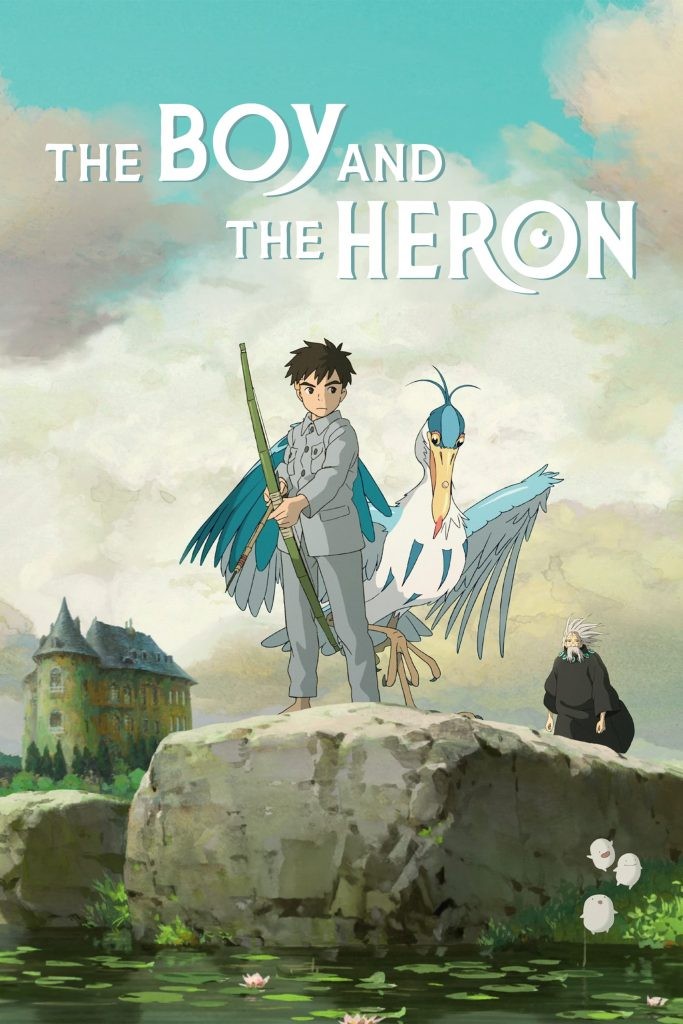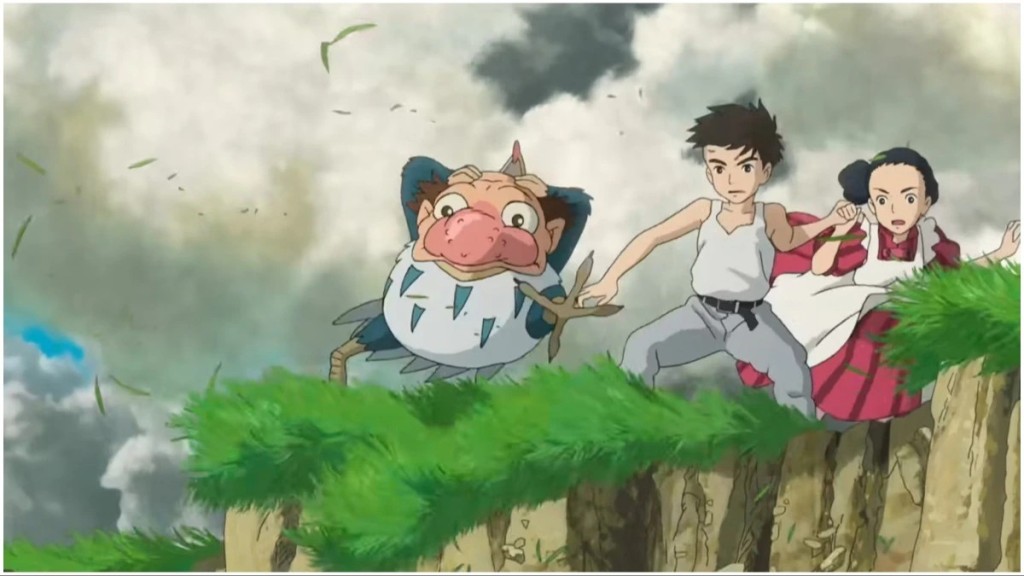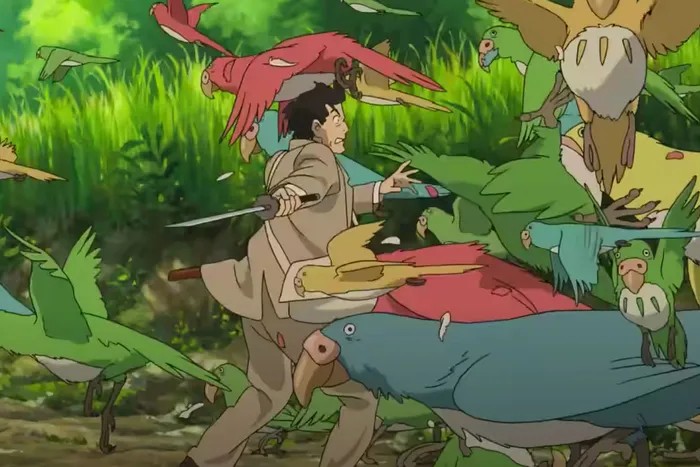 The Boy and the Heron is a 2023 Japanese animated fantasy film. It is directed by Hayao Miyazaki and produced by Studio Ghibli. The Boy and the Heron, released in Japan on July 14, 2023, was a critical success. The film went on to gross nearly $300 million worldwide, marking a huge success.
Despite its intentional absence of promotional materials, the Boy and the Heron received critical acclaim and won multiple awards. It includes Best Animated Feature Film at the Academy Awards, BAFTA Awards, Golden Globe Awards, and the Japanese Film Academy.
The film is described as a "big, fantastical film" and follows a boy named Mahito Maki. The boy enters a fantastical world with a talking grey heron. Curious about the full story? Let’s dive in and discover everything together!
The Boy and the Heron is a 2023 Japanese animated fantasy film. It is directed by Hayao Miyazaki and produced by Studio Ghibli. The Boy and the Heron, released in Japan on July 14, 2023, was a critical success. The film went on to gross nearly $300 million worldwide, marking a huge success.
Despite its intentional absence of promotional materials, the Boy and the Heron received critical acclaim and won multiple awards. It includes Best Animated Feature Film at the Academy Awards, BAFTA Awards, Golden Globe Awards, and the Japanese Film Academy.
The film is described as a "big, fantastical film" and follows a boy named Mahito Maki. The boy enters a fantastical world with a talking grey heron. Curious about the full story? Let’s dive in and discover everything together!
The Boy and the Heron - Plot

Main Metaphor Explained
The Boy and the Heron is an anime grandmaster Hayao Miyazaki's 12th feature film, focusing on Mahito Maki, a boy adjusting to a new home and stepmother during World War II. Mahito is harassed by a grey heron, leading him into a parallel world where he must reevaluate his relationship with grief, family, and worldly responsibilities.
Mahito discovers a dilapidated tower built by stepmother Natsuko's granduncle, who is Mahito's aunt and great-granduncle. Natsuko wants Mahito as his successor, but Mahito refuses to be bound by the responsibilities of a world-builder. The film critiques Miyazaki's artistry and its relationship with the beauty and horror of the real world. The film adds to Miyazaki's impressive storytelling abilities and draws upon his past to explore this new character.
Miyazaki’s World-Building Through Metafiction
The Boy and the Heron is a film by Miyazaki that explores the cosmology of a world with numbered doors, similar to the doors in The Nightmare Before Christmas. The world is unfinished, with real-world creatures functioning like invasive species. The world is filled with pelicans, hordes of pelicans, and defenseless kawaii creatures called Warawara, who are destined to become humans in the "world above." These creatures, resembling the Kodama tree spirits of Princess Mononoke and the soot sprites from My Neighbor Totoro and Spirited Away, are consumed by the collision of Earthly creatures with a constructed landscape. Miyazaki emphasizes the dangers of creating fantasy without careful consideration, as stories exist parallel to reality. An artist's interpretation can become deeply linked to an audience's experience of the world, creating new connections and changing how people think about their surroundings. For example, the Catbus in My Neighbor Totoro echoes throughout the real world, tangled up with the charm of cats and buses. However, shortsighted world-building can also build fear or prejudice.The Boy and the Heron - Characters

Main and Supporting Characters
Mahito Maki
Mahito Maki, an 11-year-old protagonist in The Boy and the Heron, is a quiet and introspective 12-year-old mourning the loss of his mother. His youthful appearance and attire reflect his era, blending with the historical setting. Mahito embarks on a surreal journey of self-discovery and healing, highlighting the emotional depth and journey of a young boy in a historical setting.
The Gray Heron
The Gray Heron, a mysterious, talking heron with a bulbous nose, is the deuteragonist in The Boy and the Heron. He resembles a regular heron and a human, acting as a trickster-guide to Mahito, lured into the magical world.
Lady Himi
Lady Himi, a fire-wielding girl in the fantasy realm, is a supporting protagonist in the film The Boy and the Heron. She uses flame magic to fend off monsters and animals, granted by the world stone. Mahito first encounters her when she attacks pelicans trying to eat Warawara. She saves Mahito when he is nearly killed by parakeets at a blacksmith's house and helps him find his stepmother Natsuko. She guides him to the World Stone, but the Stone's powers incapacitate them.
Natsuko
Natsuko is a character in The Boy and the Heron who is a kind and patient woman who cares for Mahito, initially distant but eventually accepting her as his new mother-figure. She is the second wife of Shoichi Maki and the younger sister of his first wife, Hisako, who died in a hospital fire. Mahito notices Natsuko's resemblance to his late mother, Hisako, and later discovers that Hisako looks almost identical to Natsuko, with only their hair colors. Natsuko is pregnant with Shoichi's child, and it is revealed that her baby ended up being a boy at the end of the movie.
Shoichi Maki
Mahito’s father, a factory owner working for Japan’s war effort. His emotional detachment contrasts with Mahito’s vulnerability.
Granduncle
The mystical ruler of the fantasy world, who wishes for Mahito to become his successor and maintain the balance of the magical realm.
Kiriko
Kiriko, a maid in The Boy and the Heron, is a young and powerful version of her older self who helps Mahito learn about the magical world and Warawara function. She was once a young maid in the real world, showcasing her bravery and skill in protecting Mahito in the magical world.
Noble Pelican
One of the talking pelicans in the magical realm. Unlike the others who become savage, he remains wise and noble.
The Parakeet King
Leader of the parakeets who rules over a chaotic kingdom. He represents selfish ambition and becomes an antagonist in Mahito’s journey.
The Maids (Maid Sisters)
Izumi (Maid #1)
The eldest and most serious of the four maids. She is responsible and protective toward Natsuko and the household.
Utako (Maid #2)
More cautious and soft-spoken, she often follows Izumi’s lead but cares deeply for Mahito’s well-being.
Eriko (Maid #3)
A cheerful and curious maid who brings lightness to the household, often engaging with Mahito in a friendly way.
Aiko (Maid #4)
The youngest maid, playful and innocent. In the magical world, all four maids transform into powerful protectors.
Voice Cast
Here is the voice cast of The Boy and the Heron anime:Mahito Maki
-
-
Japanese: Soma Santoki
-
English: Luca Padovan
-
The Gray Heron
-
-
Japanese: Masaki Suda
-
English: Robert Pattinson
-
Lady Himi
-
-
Japanese: Aimyon
-
English: Karen Fukuhara
-
Natsuko
-
-
Japanese: Yoshino Kimura
-
English: Gemma Chan
-
Shoichi Maki
-
-
Japanese: Takuya Kimura
-
English: Christian Bale
-
Granduncle
-
-
Japanese: Shōhei Hino
-
English: Mark Hamill
-
Kiriko
-
-
Japanese: Ko Shibasaki
-
English: Florence Pugh
-
Noble Pelican
-
-
Japanese: Kaoru Kobayashi
-
English: Willem Dafoe
-
The Parakeet King
-
-
Japanese: Jun Kunimura
-
English: Dave Bautista
-
Izumi (Maid #1)
-
-
Japanese: Keiko Takeshita
-
English: Denise Pickering
-
Utako (Maid #2)
-
-
Japanese: Jun Fubuki
-
English: Barbara Rosenblat
-
Eriko (Maid #3)
-
-
Japanese: Sawako Agawa
-
English: Melora Harte
-
Aiko (Maid #4)
-
-
Japanese: Shinobu Otake
-
English: Barbara Goodson
-
Warawara
-
-
Japanese: Karen Takizawa
-
English: (No English equivalent listed)
-
Parakeets
-
-
Japanese: Mamoudou Athie
-
English: Tony Revolori / Dan Stevens
-
The Boy and the Heron - Production

Hayao Miyazaki announced his retirement from feature animation in 2013 after completing Boro the Caterpillar (2018). However, he decided to return to direct another full-length film, which was captured in the 2016 documentary film Never-Ending Man: Hayao Miyazaki.
Miyazaki began storyboarding for the film in July 2016 and presented a project proposal for it the next month, which included the children's novel The Book of Lost Things by Irish author John Connolly and Edogawa Ranpo's Ghost Tower. Studio Ghibli approved the project, and production began in earnest in February 2017.
The film was titled Kimitachi wa Dō Ikiru ka, after the 1937 novel by Genzaburō Yoshino. Miyazaki voiced his desire to release the film around the time of the 2020 Summer Olympics in Japan. Suzuki stated that the film was expected to be completed in 2021 or 2022, with the film being 15% complete at the end of October 2019. Suzuki doubted that Miyazaki would retire completely, as idleness would trouble him. In May 2020, Suzuki recounted that the film was a "big, fantastical" film. The 60 animators working on it and an estimated 36 minutes completed after three years of production. In December 2020, Suzuki stated that the production was working with no deadlines, similar to The Tale of the Princess Kaguya (2013), which took eight years to make. In October 2022, Hoshino mentioned that the production of the film had progressed smoothly, even during the pandemic, and was nearing completion. The English cast, unveiled on October 17, features Christian Bale, Dave Bautista, Gemma Chan, Willem Dafoe, Karen Fukuhara, Mark Hamill, Robert Pattinson, and Florence Pugh.Themes
The Boy and the Heron is a film by Japanese director Miyazaki that explores themes of acceptance, love, redemption, and the power of creation. The protagonist, Mahito Maki, mirrors Miyazaki's childhood, where his father worked in a company. The company manufactures fighter plane components and his family had to evacuate during war. The film's narrative is inspired by Miyazaki's professional relationships with his grandparents, Isao Takahata and Suzuki, and integrates themes of destruction, reconstruction, and imagination.Taichiro Yoshino, the grandson of Genzaburō Yoshino, was initially distracted by the film's messages. But later on he acknowledged its shared central theme of how individuals navigate and come to terms with a world characterized by strife and loss. The film conveys flexibility in the face of conflict and grief. While advocating for the cultivation of meaningful friendships and trustworthy alliances. Ultimately it is promoting progress and fostering humanity and understanding.
The film's narrative also delves into the juxtaposition of life and death, wherein childhood and the end of life can serve as reflective counterparts. It emphasizes the importance of everyday choices and self-discovery in a world marked by violence and uncertainty. The primary emotional driver in the film is the yearning for a mother's presence, which fuels the narrative. The film is one of Miyazaki's simpler works, centered on Mahito's mission to save his mother and stepmother. This quest reflects his recurring theme of personal worthiness.Music
The film score for the movie, composed by the renowned Joe Hisaishi, was officially released in Japan on August 9, 2023. Alongside Hisaishi’s score, the theme song, "Chikyūgi," was composed by Kenshi Yonezu. Yonezu, known for his previous work with Studio Ghibli, collaborated with Hayao Miyazaki on this project.
Here are the key details about this collaboration:
- Joe Hisaishi: Composed the main film score, which was released in Japan on August 9, 2023.
- Kenshi Yonezu: Composed the theme song, titled "Chikyūgi" for Japan and "Spinning Globe" for international audiences.
- Collaboration with Miyazaki: Yonezu’s involvement in the project was a significant continuation of his partnership with Studio Ghibli, which started when he collaborated with Miyazaki on the music for the 2020 Summer Olympics opening ceremony in Tokyo, particularly on the "Paprika" segment.
- Long-Term Partnership: The collaboration between Yonezu and Miyazaki lasted for five years, during which Yonezu contributed to storyboarding and developing the project details.
- Studio Ghibli Visit in 2018: Yonezu visited Studio Ghibli in 2018 to finalize the musical composition, ensuring the music aligned perfectly with the film's vision.
The collaboration between Hisaishi, Yonezu, and Miyazaki brought together a unique blend of talents in the film’s creation. This partnership played a key role in the film’s overall success.
FAQs
Some common faqs about the boy and the heron anime are given below:1. What is The Boy and the Heron about?
The Boy and the Heron is an animated fantasy film that explores themes of self-discovery, loss, and magic. The story follows a young boy who embarks on a fantastical journey after the mysterious appearance of a heron.
2. Who directed The Boy and the Heron?
The film is directed by the legendary Hayao Miyazaki, co-founder of Studio Ghibli and known for his iconic works like Spirited Away and My Neighbor Totoro.
3. What is the genre of The Boy and the Heron?
The film falls into the genres of fantasy, adventure, and drama, with magical realism elements typical of Miyazaki’s storytelling style.
4. Is The Boy and the Heron Studio Ghibli's last film?
It has been described as Hayao Miyazaki's "final" film, though fans and critics are unsure whether it will truly be his last. Miyazaki has retired multiple times, only to return to filmmaking.
5. When was The Boy and the Heron released?
The Boy and the Heron was released in 2023 in Japan and has since been gaining international recognition.
6. Who are the main characters in The Boy and the Heron?
The main character is the young boy, who is accompanied by the enigmatic Heron and other memorable characters along his journey.
7. What is the significance of the heron in the movie?
The heron symbolizes guidance, mystery, and a connection to the supernatural. It serves as a guide to the protagonist, leading him through his journey of growth and self-realization.
Final Thoughts
The Boy and the Heron is a 2023 Japanese animated fantasy film directed by Hayao Miyazaki and produced by Studio Ghibli. The film follows a boy named Mahito Maki who enters a fantastical world with a talking grey heron. Mahito loses his mother during the Pacific War and his father, Shoichi, marries his late wife's sister, Natsuko. Mahito encounters a grey heron and is deceived by its watery imitation of his mother.
He pierces the heron's beak with his arrow, revealing a flightless creature, the Birdman, living inside. A wizard orders the Birdman to guide Mahito and his fellow Kiriko as they sink into the floor. Mahito descends into an oceanic world, where he is rescued by a younger Kiriko. They catch and sell a giant fish to bubble-like spirits called Warawara, which fly to the world above to be reborn.
A pyrokinetic young woman, Himi, protects Warawara from predation by pelicans. Mahito plugs the Birdman's beak, restoring his flight. In a dream, Mahito meets the wizard, Natsuko's granduncle, who requests Mahito to succeed in the custodianship of the world. The world collapses and floods, and Mahito, Himi, and the Birdman escape.
Follow us on our Youtube channel for more such updataes! https://www.myanimeforlife.com/the-boy-and-the-heron/?feed_id=134819&_unique_id=68125278e0615
Comments
Post a Comment